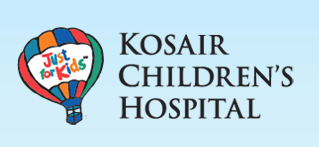Heliox-Driven Racemic Epinephrine Nebulization in Treatment of Moderate to Severe Bronchiolitis in Pediatric ED Patients
| Status: | Completed |
|---|---|
| Conditions: | Bronchitis |
| Therapuetic Areas: | Pulmonary / Respiratory Diseases |
| Healthy: | No |
| Age Range: | Any |
| Updated: | 10/14/2017 |
| Start Date: | December 2004 |
| End Date: | October 2011 |
The Use of Heliox Driven Racemic Epinephrine Nebulization in the Treatment of Moderate to Severe Bronchiolitis in Pediatric Emergency Department Patients
The purpose of this study is to assess whether children with moderate to severe bronchiolitis
treated with standard racemic epinephrine therapy via 70:30 helium-oxygen (heliox) driven
nebulization will have improvements in measurements of airway more rapidly than those treated
with conventional air-oxygen driven nebulization.
treated with standard racemic epinephrine therapy via 70:30 helium-oxygen (heliox) driven
nebulization will have improvements in measurements of airway more rapidly than those treated
with conventional air-oxygen driven nebulization.
Inclusion Criteria:
- Any child 2-12 months old seen in the emergency department.
- A clinical bronchiolitis score > 3 by modified Wood's Clinical Bronchiolitis Score
(M-WCBS).
- Diagnostic criteria of bronchiolitis includes tachypnea, cough, prolonged expiratory
phase, wheezing, rales, chest retractions, and hyperinflation of lungs on chest
radiograph. After consenting a patient to the study, respiratory syncytial virus (RSV)
infection will be tested by rapid enzyme-linked immunoabsorbent assay of nasal
secretions.
Exclusion Criteria:
- No child will be excluded based on race or gender
- Patients under the age of 2 months or greater than 12 months
- Patients with cyanotic heart disease
- Patients with lobar pneumonia, defined by results of chest radiographs.
- The presence of interstitial disease or diffuse patchy marking consistent with
atelectasis on chest radiographs will not exclude patients.
- Patients with croup.
- Patients with foreign body aspiration.
- Patients with history of cystic fibrosis, bronchopulmonary dysplasia or other chronic
lung disease.
- Patients with liver or renal disease.
- Patients with sickle cell anemia.
- Patients requiring mechanical ventilation.
- Patients who develop supraventricular tachycardia secondary to racemic epinephrine
administration.
- Patients with tracheomalacia or bronchomalacia.
- Patients who had received bronchodilators within 2 hours of initiation of the study.
- Patients who had received systemic corticosteroids within 72 hours of enrollment
- Patients who suffered from persistent airway hyperreactivity in the 3 months before
the study.
- Patients who do not tolerate the nasal cannulae for 45 out of 60 minutes.
We found this trial at
1
site
Kosair Children's Hospital For more than a century, Kosair Children's Hospital and its predecessor hospitals...
Click here to add this to my saved trials
